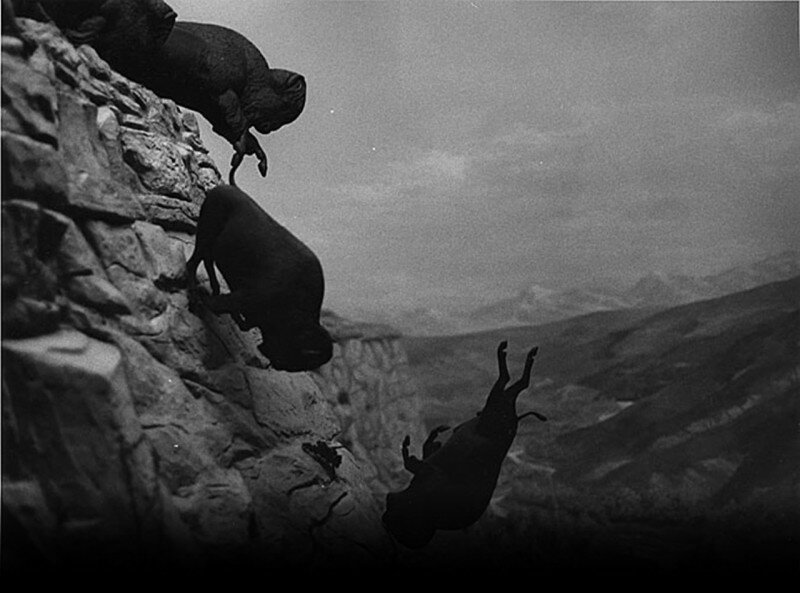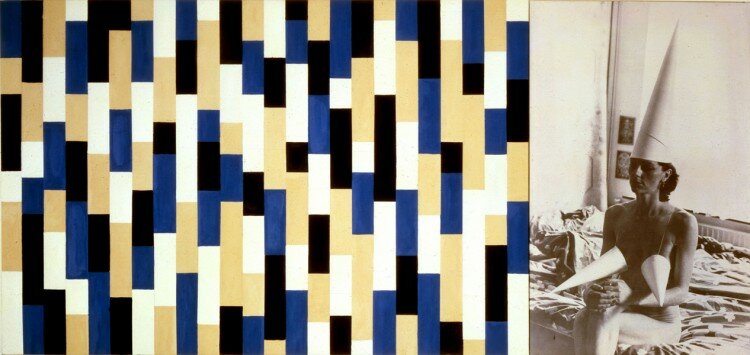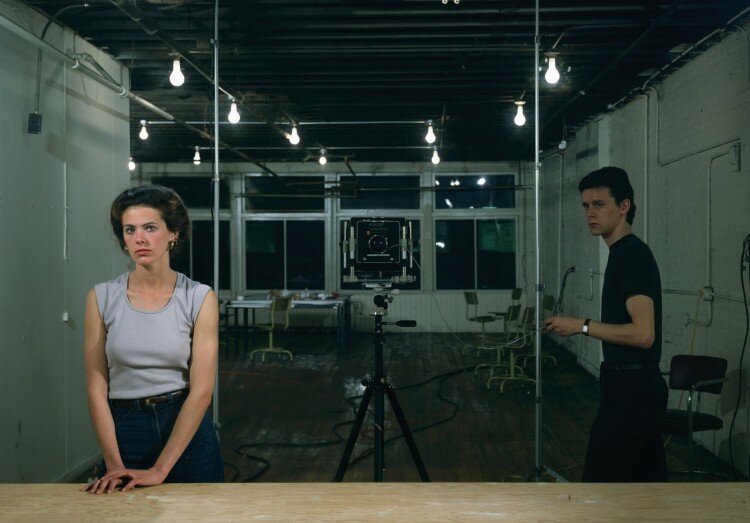(David Salle, Autopsy)
Ronald Reagan ushered in a decade that had much to celebrate and even more to question. Beneath the neon pop distillation of the 1980’s that rears its questionably stylish head on Halloween, there is a much grittier underbelly that society would soon like to forget. An era rife with crime, drugs, gender equality issues, and laden with a seemingly insurmountable AIDs crisis that left many without friends, family and loved ones.
This Will Have Been: Art, Love & Politics in the 1980s at the ICA traces the complexities of the decade through four major themes: “Gender Trouble,” “The End is Near,” “Democracy,” and “Desire & Longing.” Some of the most powerful images from the exhibition were captured by photographers who tell the decade’s turbulent story through both unabashed directness and illustrative allusions.
Check out a few of the many memorable photographs from the This Will Have Been… with their accompanying wall texts after the jump.
——————————————————————–
David Wojnarowicz
 (Untitled (Buffalo))
(Untitled (Buffalo))
“David Wojnarowicz’s Untitled (Buffalo) is one of the decade’s most haunting artistic responses to the AIDS crisis. A photograph of an Old West diorama from a Washington, DC, museum, the work depicts stampeding buffalo plummeting off the edge of a cliff to certain death. Careening into the abyss, the sturdy animals tumble head over tail, propelled forward by their own considerable weight. One buffalo stands poised at the top of the cliff, with front hooves silhouetted against the open sky. He has seen the others drop but remains powerless before the inertia of the fall. Made in the wake of the artist’s HIV-positive diagnosis, Wojnarowicz’s image draws a parallel between the AIDS crisis and the state-sponsored purging of buffalo in the United States in the nineteenth century, reminding viewers of the outright neglect and marginalization that characterized the politics of HIV/AIDS.”
——————————
Jeff Wall
(Picture for Women)
“Jeff Wall’s Picture for Women explores the feminist concept of the gaze. Feminist theory proposed that throughout the history of Western art, images have overwhelmingly depicted men looking and women being looked at, situating the viewer as active and the subject as passive. Typical of Wall’s ongoing dialogue with art history, this photograph recalls impressionist artist Édouard Manet’s (French, 1832–83) Bar at the Folies-Bergère (1882) in its composition and thematic content, particularly the radical way the central female figure looks directly out at the viewer, refuting historical ideas about the nature of the gaze. Foregrounding the staged quality of his image, Wall invites viewers to consider the complex dynamics of the gaze from the perspective of the female model, the male photographer, and the camera, all of which are complicated by the reflective surface of the mirror, which is both unseen and central to the composition.”
——————————-
Louise Lawler
(Between Reagan and Bush)
“Since the early 1980s, Louise Lawler has posed questions on the social function of art in photographs, installations, and provocative role-playing performances. Between Reagan and Bush consists of two juxtaposed parts. One is Lawler’s photograph of Jeff Koons works in storage. The other is a painted wall panel of a menu taken from The Silver Palate Cookbook, a contemporary guide to entertaining geared toward elite consumers. The title identifies the policies of Presidents Ronald Reagan and George Bush as courses in a meal for upper-class consumption. Koons’ work represents her view of the gluttony of elitist taste and politics.” (via Art Tattler)
————————-
Richard Prince
(Untitled (cowboy))
“In these photographic enlargements of contemporary advertisements, Richard Prince examined the mass media’s ability to both shape and fulfill our desires. Prince’s images of the Marlboro Man expose the misleading associations employed in cigarette advertisements—for instance, using a picture of the lone cowboy, a romantic image of the past, to sell a product largely to urban city dwellers, who had developed new models of masculinity. Untitled (cowboy)’s subject is heroic, deftly wrangling two rearing horses, while the blurred enlargement in Untitled (man’s hand with cigarette) shows the dark underside of addiction beneath the seductive surfaces of advertising.”
————————————————
(Jimmy De Sana, Seashells & Eggshells)
When walking through such a broad and ambitious exhibition that examines the cultural value and influence of the 1980s, the wall text becomes a crucial aspect of the programming. In this case, text can mean the difference between seeing a pack of toy buffalos tumbling off a foam core cliff and the underlying traumatic AIDs crisis which overshadowed the era. So, while its great to bring a date along to ICA Free Thursdays(for the people watching experience), you may want to come back when the galleries are a bit quieter and less congested in order to fully take-in all that This Will Have Been.. has to offer.
Trust me, it’s much more than Cyndi Lauper songs and neon leggings.
This Will Have Been: Art, Love & Politics in the 1980s is on view through March 3rd, 2013 at the ICA. More information on the exhibition and included works here.
(Note: Above wall texts courtesy of the ICA unless otherwise noted. Thanks!)
(Another Note: This post was originally written for Photo Nights Boston. Check out this and other entries on their photog blog here.)









